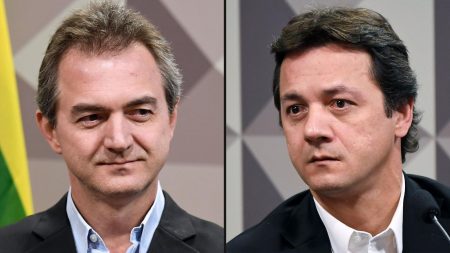The Russian artillery corps, a crucial element of Moscow’s military strategy in Ukraine, is facing a deepening crisis of depletion and dependence. Since the invasion began in February 2022, relentless Ukrainian counter-offensives have decimated Russia’s initial force of around 2,000 tracked howitzers, with at least 800 confirmed destroyed and hundreds more rendered inoperable due to a severe shortage of replacement barrels. This attrition has outpaced Russia’s domestic production capacity, forcing the Kremlin to turn to unconventional sources for replenishment. Meanwhile, Russia’s reserves of older, Cold War-era howitzers have dwindled significantly, further exacerbating the artillery shortage.
This dire situation has led Russia to forge a precarious alliance with North Korea, a partnership that highlights Moscow’s growing reliance on external support. Recent sightings of North Korean M1989 self-propelled howitzers traversing Russia on railcars underscore the increasing flow of military hardware from Pyongyang. This reliance extends beyond just howitzers to ammunition, with North Korea becoming a major supplier of artillery shells. This dependency represents a significant shift in the dynamics of the conflict and raises concerns about the long-term implications for both Russia and the broader geopolitical landscape.
The North Korean M1989 howitzer, firing 170-millimeter shells, represents a departure from the standard Russian calibers of 122mm and 152mm. This unusual caliber underscores the extent of Russia’s dependence, as the M1989 is unique globally, and its ammunition production is believed to be concentrated in North Korea, potentially alongside Iran. Each M1989 deployed within the Russian ranks further cements Moscow’s reliance on Pyongyang, creating a vulnerability that North Korea could exploit.
Initially, North Korea primarily supplied ammunition in calibers compatible with existing Russian artillery, addressing Moscow’s production capacity shortfall rather than a fundamental capability gap. This meant that even if the Russo-North Korean partnership fractured, Russian artillery could still function, albeit with reduced firing rates. However, the introduction of the M1989 changes this dynamic fundamentally. As more of these unique howitzers enter the Russian arsenal, Moscow’s dependence on North Korea for both the weapons systems and their specialized ammunition deepens, creating a strategic vulnerability.
The burgeoning arms trade between Russia and North Korea has raised questions about the nature of their exchange. Analysis from groups like Frontelligence Insight, which tracked the initial influx of over a million North Korean shells, highlighted the possibility of Russia providing financial aid or sharing military technology in return. Recent statements by U.S. Admiral Samuel Paparo, Commander of the U.S. Indo-Pacific Command, shed light on this exchange. Paparo suggests that Moscow is likely transferring missile and submarine technology to Pyongyang, potentially bolstering North Korea’s pursuit of nuclear-armed, stealth-capable submarines.
This trade represents a potentially asymmetrical exchange, with Russia receiving much-needed artillery while North Korea gains access to technology that could significantly enhance its nuclear capabilities. While this arrangement addresses Russia’s immediate artillery needs, it raises long-term strategic concerns. Russia’s growing reliance on North Korea creates a dependence that Pyongyang could leverage for its own geopolitical gains. Should the relationship sour, North Korea could effectively cripple a significant portion of Russia’s artillery power, leaving Moscow vulnerable and further entangled in a complex web of international relations. This precarious dependence underscores the high stakes of the conflict in Ukraine and its potential to reshape global power dynamics.










